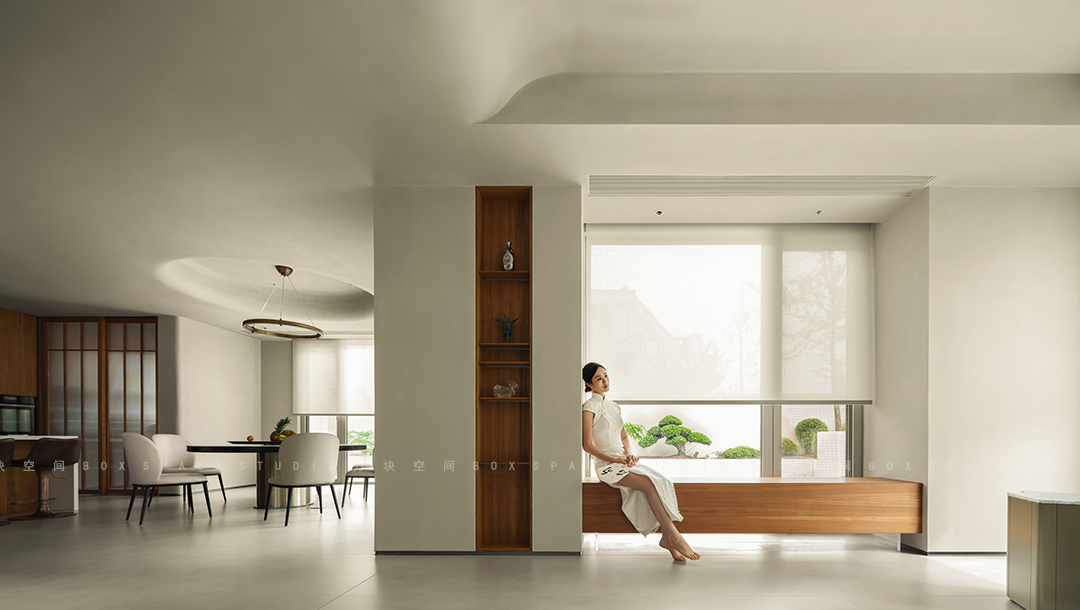Main East Side Lofts 1100 Architect
2017-05-01 03:00
架构师提供的文本描述。主营:东侧楼是一个混合用途的建筑,在迅速变化的附近法兰克福,德国的东港(奥斯塔芬)。最初的战前建筑是作为工厂建造的,但是,由于第一次世界大战的爆发,设计一直没有完全实现,取而代之的是医院和工人的住房。1100建筑师的设计涉及两项任务:对历史建筑的翻新和同尺寸的当代加法,完成原来的体积。1100公司对现有结构的全面调查涉及到与法兰克福地标部的合作,该公司在近一个世纪后制定了最终实现这座建筑的战略。
Text description provided by the architects. Main: East Side Lofts is a mixed-use building in a rapidly changing neighborhood near Frankfurt, Germany’s East Harbor (Osthafen). The original prewar building was built as a factory; however, due to the outbreak of World War I the design was never fully realized and the building was used instead as a hospital and later as worker’s housing. 1100 Architect’s design addresses two tasks: the renovation of the historic building and a contemporary addition of equal size that completes the original volume. 1100’s comprehensive investigation of the existing structure involved a collaboration with Frankfurt’s Landmarks Department, from which the firm developed its strategies to finally realize this building almost a century later.
为了达到一个连贯的整体,加法解释了原始建筑的体积、节奏和比例,但用现代语言和新材料重新想象了未完成的翅膀。该项目遵循两个设计理念:外观包装和室内阁楼布局。
To achieve a cohesive whole, the addition interprets to the volume, rhythm, and proportions of the original building but reimagines the unfinished wing in a modern language and with new materials. The project adheres to two design concepts: the exterior wrapping of the façade and the interior loft layout.
门面是由原来的曼萨德屋顶启发,并设想作为一个连续的包装。建筑物的外表面沿着立面的高度无缝地折叠,最终形成屋顶。所有的表面都是均匀地覆盖在水泥纤维板上,并在窗户的深度突出显示颜色。这些面板有趣地弯曲以反射光线,当你在建筑物周围移动时,捕捉到一系列的视觉色调。现代的个性和造型,新的外观建立了一个当代箔的地标结构。除了其独特的形式,建筑围护结构采用高等级隔音材料,以减轻来自港口的噪音。这一策略的核心是位于厚壁深处的声学双窗,使声音振动发生偏转。
The façade is inspired by the original mansard roof and conceived as a continuous wrapper. The outer surface of the building seamlessly folds along the height of the façade to ultimately form the roof. All surfaces are uniformly clad in cement fiberboard and highlighted with colored reveals in the depth of the windows. These panels playfully bend to reflect light capturing a range of visual tones as one moves around the building. Modern in character and shape, the new façade establishes a contemporary foil to the landmark structure. In addition to its distinct form, the building envelope employs highly rated soundproofing materials to mitigate noise from the harbor. Central to this strategy are the acoustical double windows which sit deep into the thick walls, deflecting sound vibrations.
室内阁楼布局注重开放空间的灵活性。这座历史建筑的关键特征-比如高高的天花板和大窗户-都被移到了加盖上。上层利用阁楼提供连续的空间,创造定制的阁楼与非传统的平面图。
The loft layout of the interiors places importance on flexibility of open space. Key characteristics of the historic structure – like its high ceilings and large windows -- were transposed to the addition. The upper floors utilize the attic to provide continuity of space, creating bespoke lofts with non-traditional floor plans.
Architects 1100 Architect
Location Frankfurt, Germany
Architect in Charge Juergen Riehm, FAIA, BDA David Piscuskas, FAIA, LEED AP Gunter Weyrich, Dipl. Ing. Architect Susanne Milne, MAA
Design Team Sebastian Kaempf, LEED AP; Sabina Wallwey, Dipl. Ing. Architect BDA; Peter Heller, LEED AP; Juan Peters, Dipl. Ing. Architect; David Bujanowski, Dipl. Ing. Architect; Jessica Heym; Christopher Johnson, AIA; Martin Kropac; Julia Martin; Julia Schleppe; Rob Weiss, Dipl. Ing. Architect; Karin Kohlhaas, Dipl. Ing. Architect
Photographs Nikolas Koenig
 举报
举报
别默默的看了,快登录帮我评论一下吧!:)
注册
登录
更多评论
相关文章
-

描边风设计中,最容易犯的8种问题分析
2018年走过了四分之一,LOGO设计趋势也清晰了LOGO设计
-

描边风设计中,最容易犯的8种问题分析
2018年走过了四分之一,LOGO设计趋势也清晰了LOGO设计
-

描边风设计中,最容易犯的8种问题分析
2018年走过了四分之一,LOGO设计趋势也清晰了LOGO设计





























































